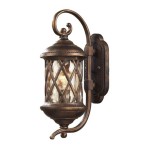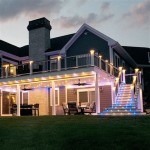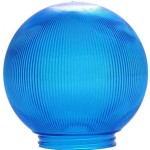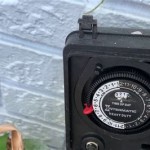How To Seal Chalk Paint For Outdoor Use
Chalk paint, with its matte finish and ability to adhere to various surfaces, is a popular choice for furniture and decorative projects. However, its delicate nature poses challenges when used outdoors, where exposure to weather elements can cause fading, cracking, and peeling. To ensure the longevity and beauty of your chalk paint projects in outdoor settings, proper sealing is crucial. This article outlines the essential steps to seal chalk paint for outdoor use, guaranteeing a durable and weather-resistant finish.
Choosing the Right Sealer
The first step is to select a sealer that specifically caters to outdoor applications. Various sealers are available, each with unique qualities and suitability for different projects. The primary considerations are:
-
Type of Sealer:
Polyurethane-based sealers are widely preferred for outdoor chalk paint projects. They offer excellent durability, protection against UV rays, and resistance to moisture and abrasion. Acrylic sealers are a viable alternative for projects requiring a slightly less durable finish but with good water resistance. -
Finish:
Sealers come in various finishes, including matte, satin, semi-gloss, and gloss. Matte finishes are ideal for maintaining the chalk paint's original matte appearance, while satin and semi-gloss offer a more polished look with added protection. Gloss finishes are generally not recommended for chalk paint as they can alter its textured aesthetic. -
Application:
Consider the ease of application for your chosen sealer. Some sealers are spray-on, while others require a brush or roller. Select a method that aligns with your comfort level and the project's scale.
Preparing the Surface
Proper surface preparation is critical for achieving a long-lasting seal. The following steps ensure the sealer adheres effectively and maximizes its protective qualities:
-
Cleaning:
Before sealing, thoroughly clean the chalk paint surface with a damp cloth and mild soap. Remove dust, dirt, and any residue that might hinder the sealer's adhesion. Allow the surface to dry completely before proceeding. -
Sanding:
Lightly sand the chalk paint surface with fine-grit sandpaper. This step helps create a slightly rough texture, improving the sealer's grip and resulting in a smoother finish. Avoid over-sanding as it can damage the chalk paint. -
Patching:
If any imperfections or chips exist in the chalk paint, use a filler or spackle to repair them. Allow the patching material to dry completely before sanding it smooth.
Applying the Sealer
With the surface prepped, apply the sealer according to the manufacturer's instructions. The following guidelines provide a general framework for successful application:
-
Thin Coats:
Apply the sealer in thin, even coats. Avoid thick layers, as they can cause the sealer to crack or become uneven. Multiple thin coats offer better adhesion and protection than a single thick coat. -
Drying Time:
Allow each coat of sealer to dry completely before applying the next. Consult the product label for the recommended drying time. Proper drying ensures a smooth and consistent finish. -
Brushstrokes:
When using a brush, apply the sealer in long, even strokes, avoiding overlapping or excessive pressure. Smooth out any brush marks before the sealer dries. -
Ventilation:
Ensure adequate ventilation during the application and drying process. Some sealers emit fumes that require proper air circulation.
Additional Considerations
Besides choosing the right sealer and preparing the surface effectively, a few additional points can enhance the longevity of your outdoor chalk paint project:
-
Coat Number:
While two coats of sealer are generally sufficient, consider applying an additional coat for high-traffic areas or surfaces exposed to harsh weather conditions. More coats contribute to increased durability. -
Maintenance:
Periodically inspect your sealed chalk paint project for any signs of wear or damage. Re-apply the sealer as needed to maintain its protective qualities and prolong the life of your project. -
Location:
Choose an outdoor location that minimizes exposure to direct sunlight and rain. If possible, place your chalk paint project under a covered area or awning to further protect it from the elements.
By adhering to these steps and considerations, you can ensure your outdoor chalk paint projects are protected and retain their charm for years to come. Remember to consult the product label for specific instructions regarding your chosen sealer and always apply it in a well-ventilated area.

The 5 Top Ways To Seal Chalk Paint Or Milk Artsy Rule

Painting Outdoor Furniture With Chalk Paint At Home Ashley

Painting Outdoor Furniture With Chalk Paint At Home Ashley

Painting Garden Pots With Annie Sloan Chalk Paint Our Southern Home

Making Outdoor Chalk Paint In My Own Style

Painting Outdoor Furniture With Chalk Paint At Home Ashley

The Best Clear Coat For Painted Wood 2024 Tested Reviewed

Top Coat Protection Options For Chalky Painted Furniture Diy Beautify Creating Beauty At Home

Eden No Seal Chalk Paint 1l Vintro Farby Do Mebli I Domu S Leading Manufacturer Of Matt Emulsion Concrete Effect

How To Paint Furniture With Chalk The Step By Guide In My Own Style







